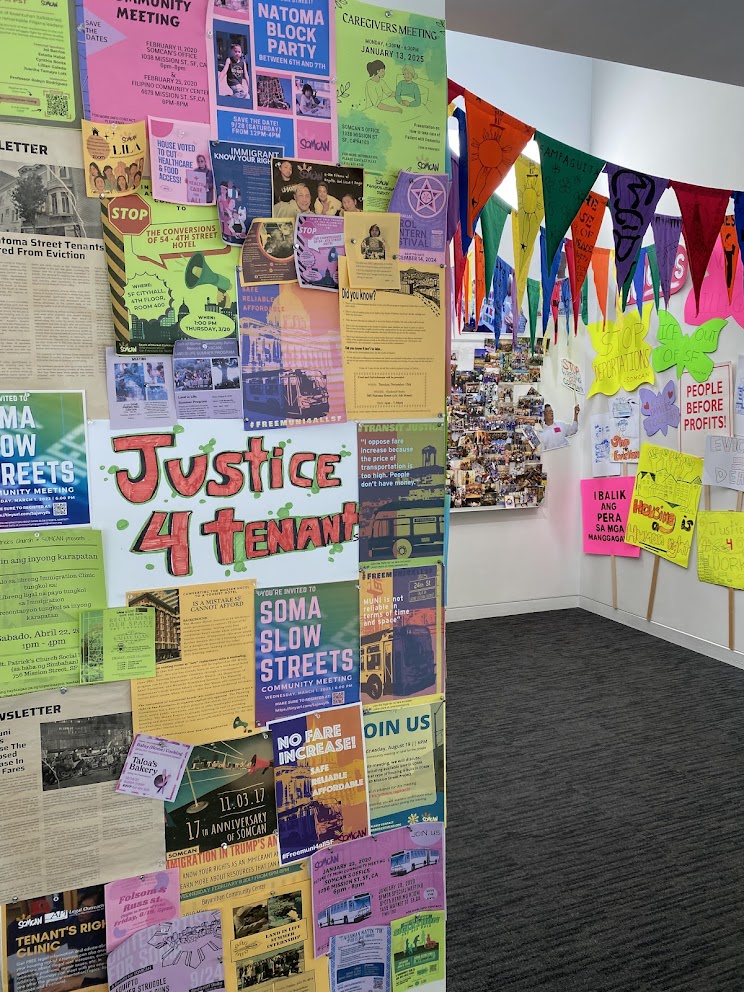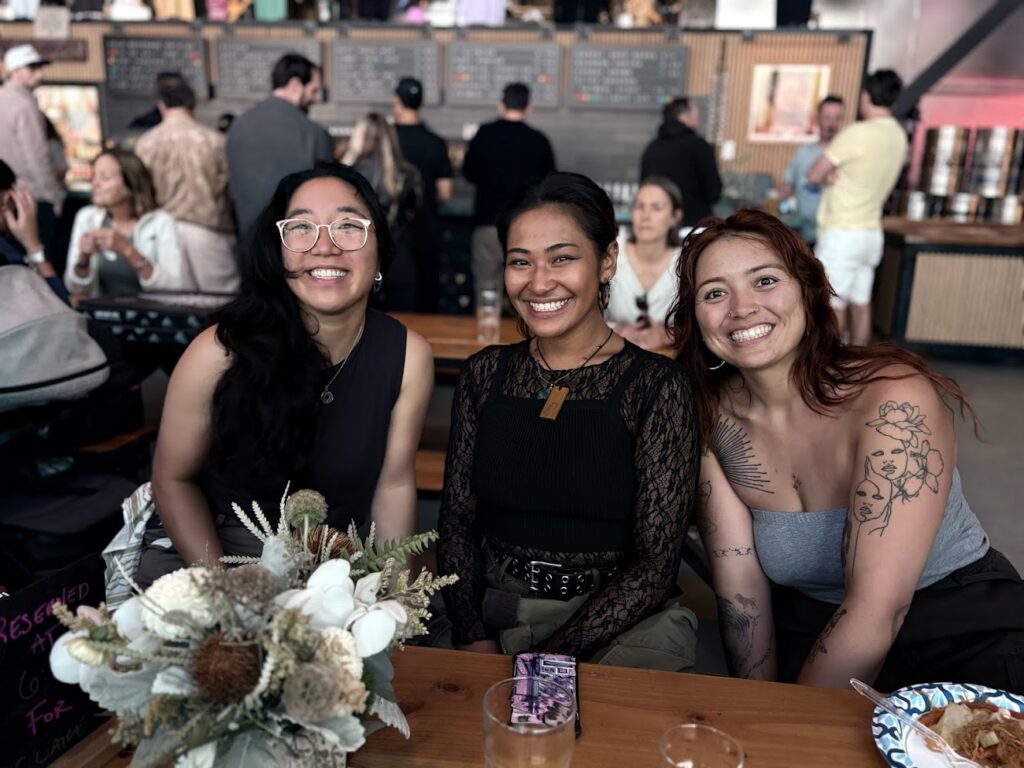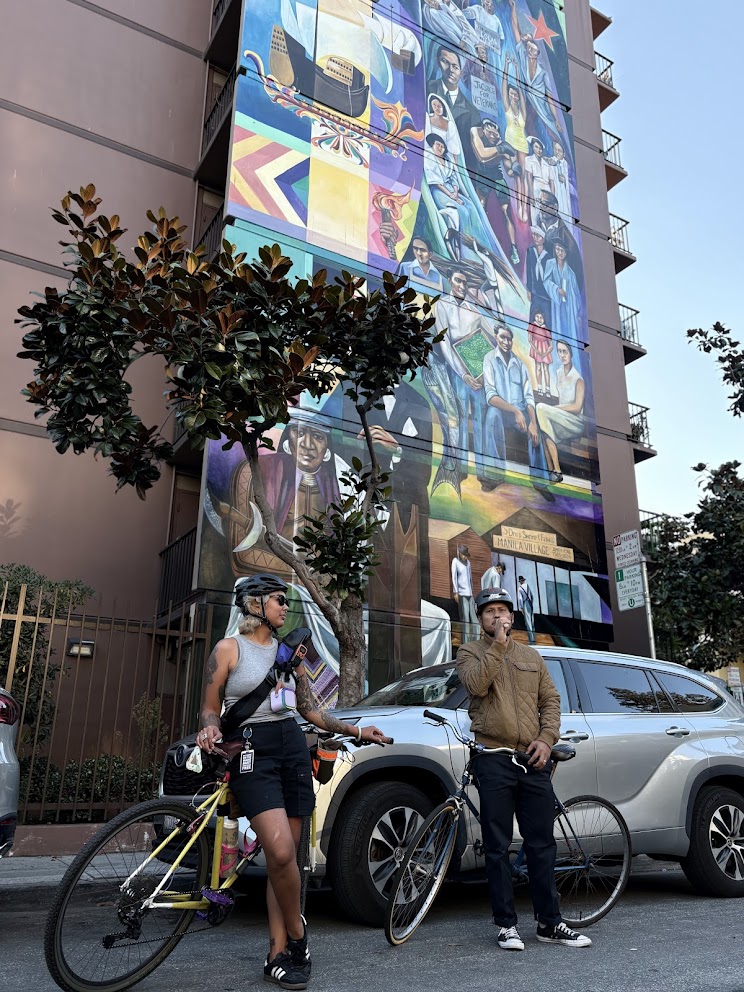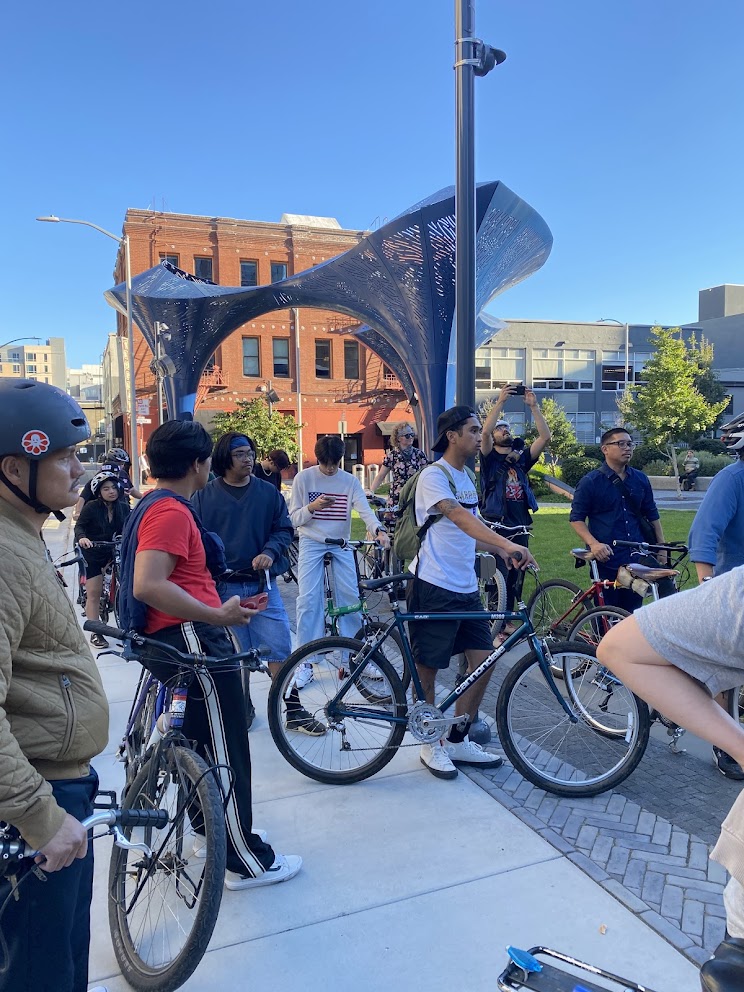In partnership with SoMa Pilipinas and South of Market Community Action Network (SOMCAN) we successfully led the first ever ethno-tour of the Filipino Cultural District by bike on a few weeks ago on October 17. We were joined by roughly 40 participants ranging from ages 14 to 65 of varying skill levels and abilities.
Cecilia Vega-Mayer, SFBike’s Director of Community Programs, and I both wanted to honor Filipino-American History Month by uplifting the struggles and resilience of the local Filipino community while also celebrating biking in San Francisco, as we’re both Filipinx-Americans who ride bikes as our primary modes of transportation.
When we talk about how past city planning decisions have harmed communities of color, one major historical example is the redevelopment era and the erasure of Manilatown, when the City evicted Filipino seniors from the International Hotel to make room from a parking lot in 1977, continuing through the dotcom boom and tech boom exacerbating rents and displacing working class residents in the 2000s.






Having grown up in the South of Market, immersed in the thriving Filipino community for my formative years, I knew it made sense to partner with local organizations like SoMa Pilipinas and SOMCAN to host this event. San Francisco has such a rich Filipino history and culture, and our ride participants learned about some of that history at the four stops we made.
Mint Mall: A hub of arts, activism, and culture with apartments on the upper floors and direct service organizations and retail occupying the bottom floors. The Mint Mall has served as a one-stop shop for the Filipino community for decades.
Victoria Manalo Draves park: Named after the Filipina-American diver from the South of Market to win two gold medals in the 1948 Olympics, which made her the first Asian-American to win gold in the Olympics. Today VMD Park is one of the few parks in SoMa, and local community-based organizations like SOMCAN regularly advocate to protect the park’s access to sunlight from new developments.
Ang Lipi ni Lapu-Lapu mural: Originally painted by Johanna Poethig in 1984 and recently restored by artists Dev Heyrana, Mariel Paat, and Pablo Ruiz Arroyo last year, the 90-foot mural represents a visual timeline of Filipino immigration to the Americas spanning 500 years.
Gran Oriente in South Park: One of the first properties in San Francisco to be owned by Filipinos, the Gran Oriente housed many Filipino bachelors, merchant marines and farm workers. The property was cooperatively purchased in 1948 by members pooling together $6000.
Interested in taking this tour? Schedule the full two hour ethno-tour with SoMa Pilipinas here!
On our nearly two-hour long ride, I spoke with many participants, some who ride bikes regularly and some of whom were riding for the first time in a long time. It was a casual, no-drop trip through downtown during afternoon rush hour that was full of laughter, young people singing along with Tagalog pop songs, and more tender moments feeling a sense of belonging riding with such a large group of other Filipino-Americans.
Movement building is a lot of work and we’re in it for the long haul. To help us lead more events like this, consider joining or renewing your membership, or making a donation below!
